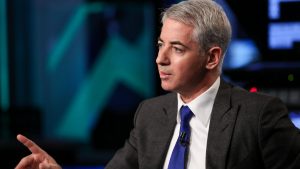Share this page:
There are currently around 2,000 ISA millionaires living in the UK. As a result, a rising number of Brits are planning to start their own ISA investments in the hope of following in the millionaires’ footsteps. But how exactly do you become an ISA millionaire? Here’s how I personally plan on reaching this goal.
My ISA millionaire plan of action
Like many Brits, I was intrigued to find out that 2,000 people in the UK have become millionaires due to ISA investments. As someone who is passionate about building wealth for the future, this seemed like an excellent challenge for me. Becoming an ISA millionaire is about gradually building wealth by making smart decisions and choosing the right investments. Here’s how I plan to do it.
1. Calculate my goal
My first step towards becoming an ISA millionaire was calculating my plan by using a savings calculator. This is the best way to figure out exactly how to reach a goal.
For example, by using a savings calculator I worked out that, with a deposit of £10,000, I would need to make monthly contributions of £500 for 40 years with an annual interest rate of 6% in order to reach my goal.
You can tailor your plan to suit your needs. Typically, late savers will need to make larger monthly contributions and secure a higher interest rate to achieve ISA millionaire status.
2. Choose the right ISA
If your goal (like mine) is to become an ISA millionaire, it is vital that you choose the right ISA to invest in. Luckily, you can have more than one type of ISA at once, which means that you can spread your savings across several accounts and benefit from a variety of types.
I personally have two ISA accounts. My lifetime ISA rewards me with a government bonus of 25% on top of whatever I save. I also have a stocks and shares ISA. These are excellent options for people who are happy to risk their money for slightly higher interest rates.
High interest rates are the key to becoming an ISA millionaire due to the fact that annual contributions are limited. I am aiming for an annual interest of 6%, which is achievable through a stocks and shares ISA.
However, it is worth noting that if you invest in a stocks and shares ISA, you put your capital at risk. Whilst they offer the potential for higher interest rates, the stock market could dip at any time.
If you are able to make higher contributions and can accept a lower interest rate, it may be safer to invest in a fixed-rate cash ISA.
3. Automate savings
To ensure that I stick to my plan, I will automate my monthly contributions. As a result, I will not forget to pay into my ISA or be tempted to spend the money that I plan on saving. This is a great idea for anyone who struggles to make regular savings contributions. If you automate your funds, you won’t have to make the conscious decision to save every month.
However, it is important that you consider your automated savings when planning your monthly budget. Make sure that you have enough money left over to pay your expenses each month.
4. Invest with passive income
£500 is a large amount of money to save every month. Therefore, I plan on building up a source of passive income that I can invest in my ISAs. Passive income is money that can be generated in your sleep. Therefore, it is a great way to increase your monthly earnings and have room to invest more into your ISA.
Anyone can start earning passive income. If you’re stuck for ideas, here are some excellent passive income opportunities for 2022. By earning extra cash, it will be easier to make regular contributions and become an ISA millionaire!
Was this article helpful?
YesNo
About the author
Ruby is a freelance writer who enjoys writing about all things personal finance. After embarking on her own side hustle journey three years ago, Ruby is passionate about helping others to learn about the ins and outs of persona… Read More
Share this page:
Some offers on The Motley Fool UK site are from our partners — it’s how we make money and keep this site going. But does that impact our ratings? Nope. Our commitment is to you. If a product isn’t any good, our rating will reflect that, or we won’t list it at all. Also, while we aim to feature the best products available, we do not review every product on the market. Learn more here. The statements above are The Motley Fool’s alone and have not been provided or endorsed by bank advertisers. John Mackey, CEO of Whole Foods Market, an Amazon subsidiary, is a member of The Motley Fool’s board of directors. The Motley Fool UK has recommended Barclays, Hargreaves Lansdown, HSBC Holdings, Lloyds Banking Group, Mastercard, and Tesco.
This post was originally published on Motley Fool






